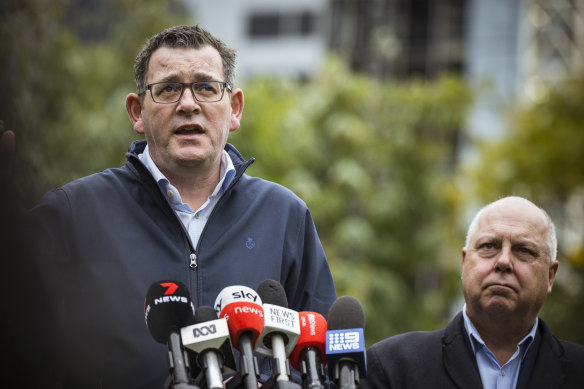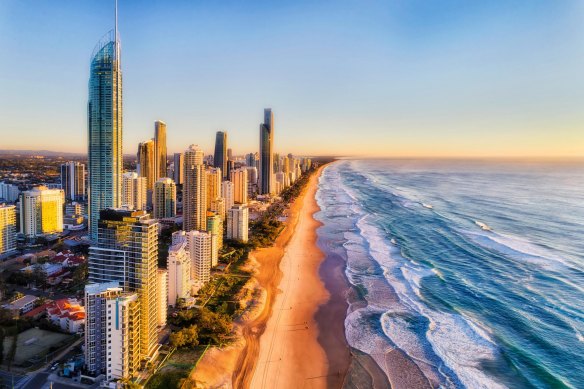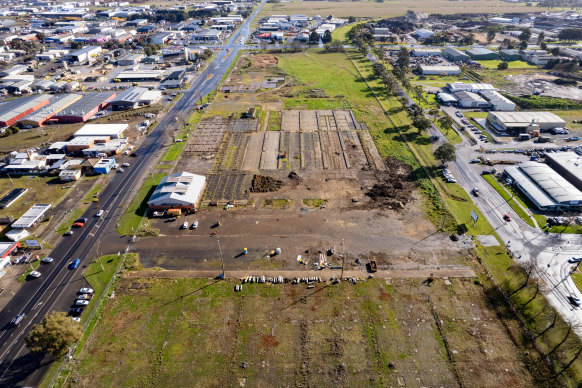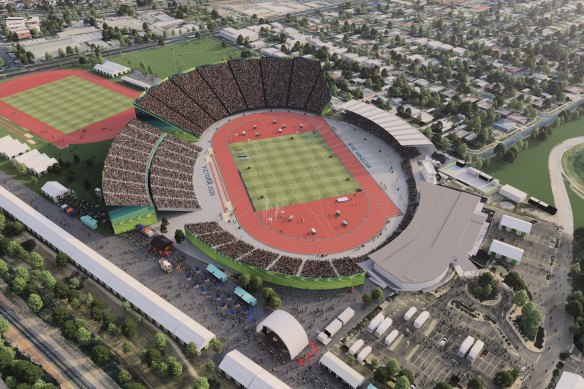Save articles for later
Add articles to your saved list and come back to them any time.
Premier Daniel Andrews says he does not believe many of the soaring costs that prompted him to cancel the Commonwealth Games could have been predicted. But there were red flags early on.
The event’s business case which underpinned the original $2.6 billion price tag for the Games was released on Saturday and reveals the bid team putting together cost estimates did not have the luxury of time.
Victorian Premier Daniel Andrews on Saturday.Credit: Chris Hopkins
To get their analysis done fast enough to secure the deal, they looked heavily at the 2018 Gold Coast Games when figuring out how much money they would need to spend.
This meant the document predicting the operating costs for a six-city event held across Victoria’s regions looked to a centralised version of the Games that was held in a tourist hot spot with more than 500,000 people, an airport and proximity to the metropolis of Brisbane.
Alterations were made to account for “materially different” costs, but the January 2022 business case acknowledged some big question marks.
“The estimated budget has been built on a ‘top down’ basis and baselined from the Gold Coast 2018 Commonwealth Games,” the document said.
The Gold Coast Commonwealth Games were used as a “baseline” when the Victorian event was first costed.Credit: iStock
“Time has not permitted a more robust ‘bottom up’ approach as key elements of Games planning are not yet understood.”
This may go some way to explaining how – by July this year – the price tag for police and security more than doubled from $201 million to $499 million, and how a $110 million transport budget nearly tripled to $306 million.
Another conundrum is the revelation of $2 billion in “additional cost pressures” that, as the premier would have it, could not be foreseen.
Little detail is provided about how these figures came to be except that they were reviewed by the Department of Treasury and Finance and the Department of Premier and Cabinet.
The sale yards in Ballarat that were to be converted into accommodation for Commonwealth Games athletes before Victoria decided to no longer host the 2026 sporting event.Credit: Jason South
The government says this includes issues such as supply constraints, accommodation shortages and “hyper-escalation” in prices – partly because of the compressed timeline.
“If you’ve got a fixed-term event, and you can’t negotiate on when it’s going to be held … The only thing left is price,” Mr Andrews said on Saturday.
Once again, the business case shows there were signs of what was on the horizon.
It says there was a critical risk the Games could not be delivered in time because the process was compressed from eight years into four.
An artist’s impression of the athletics venue in Ballarat for the now cancelled Games.
The potential fallout was that costs could be underestimated and benefits overestimated. However, this could be reduced to “medium risk” through a dedicated government agency and making the most of existing and pop-up facilities.
Victoria tried both these things but in the end higher costs and limited benefits were the very reasons the government provided for pulling the pin.
Andrews started his time as premier cancelling a project he said didn’t stack up, the East West Link, at a cost of more than $1.1 billion, but managed to keep voters on side.
He may now finish his career with another expensive cancellation and it will be up to the public to decide if this one could have been avoided.
The Morning Edition newsletter is our guide to the day’s most important and interesting stories, analysis and insights. Sign up here.
Most Viewed in Politics
From our partners
Source: Read Full Article






